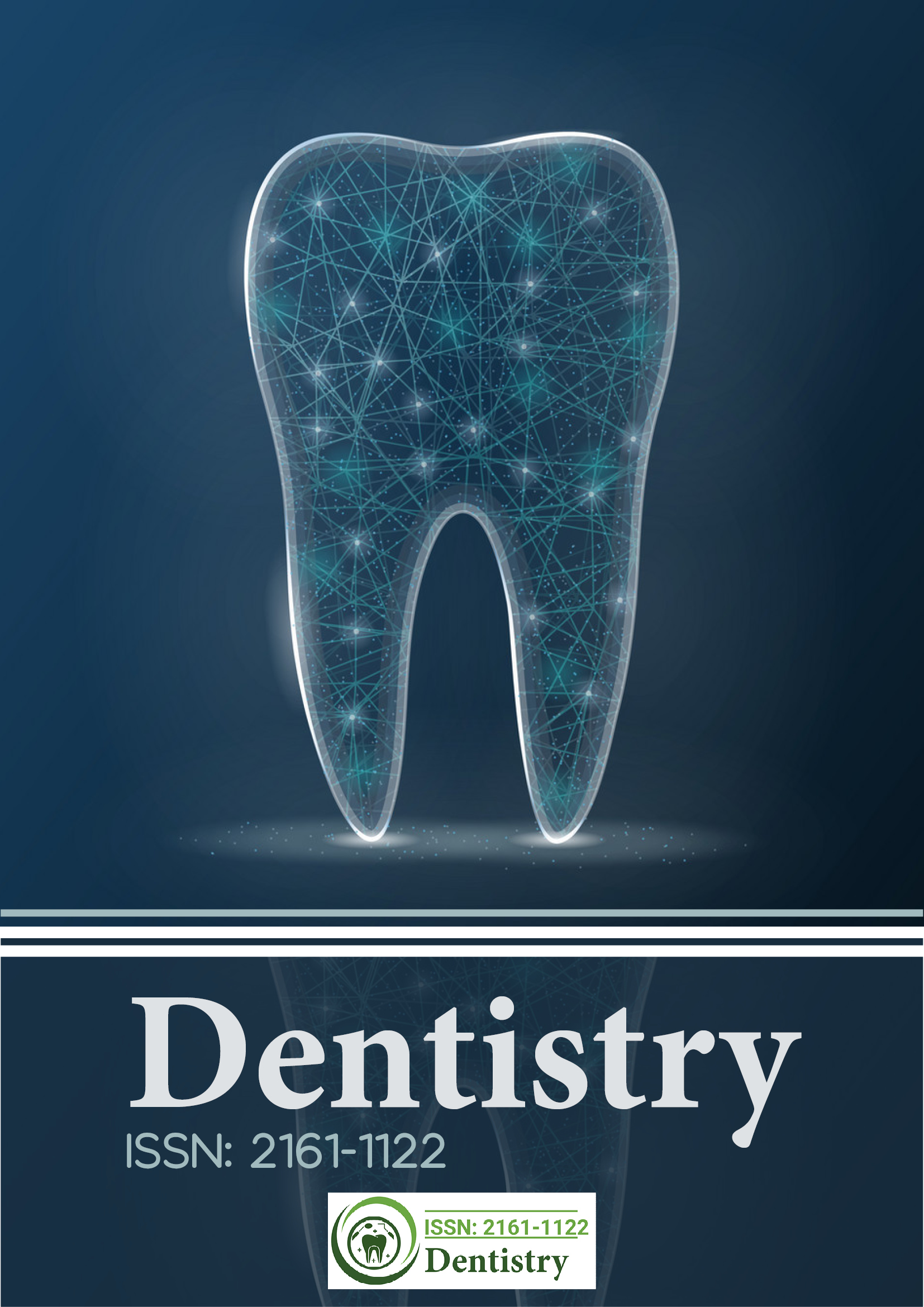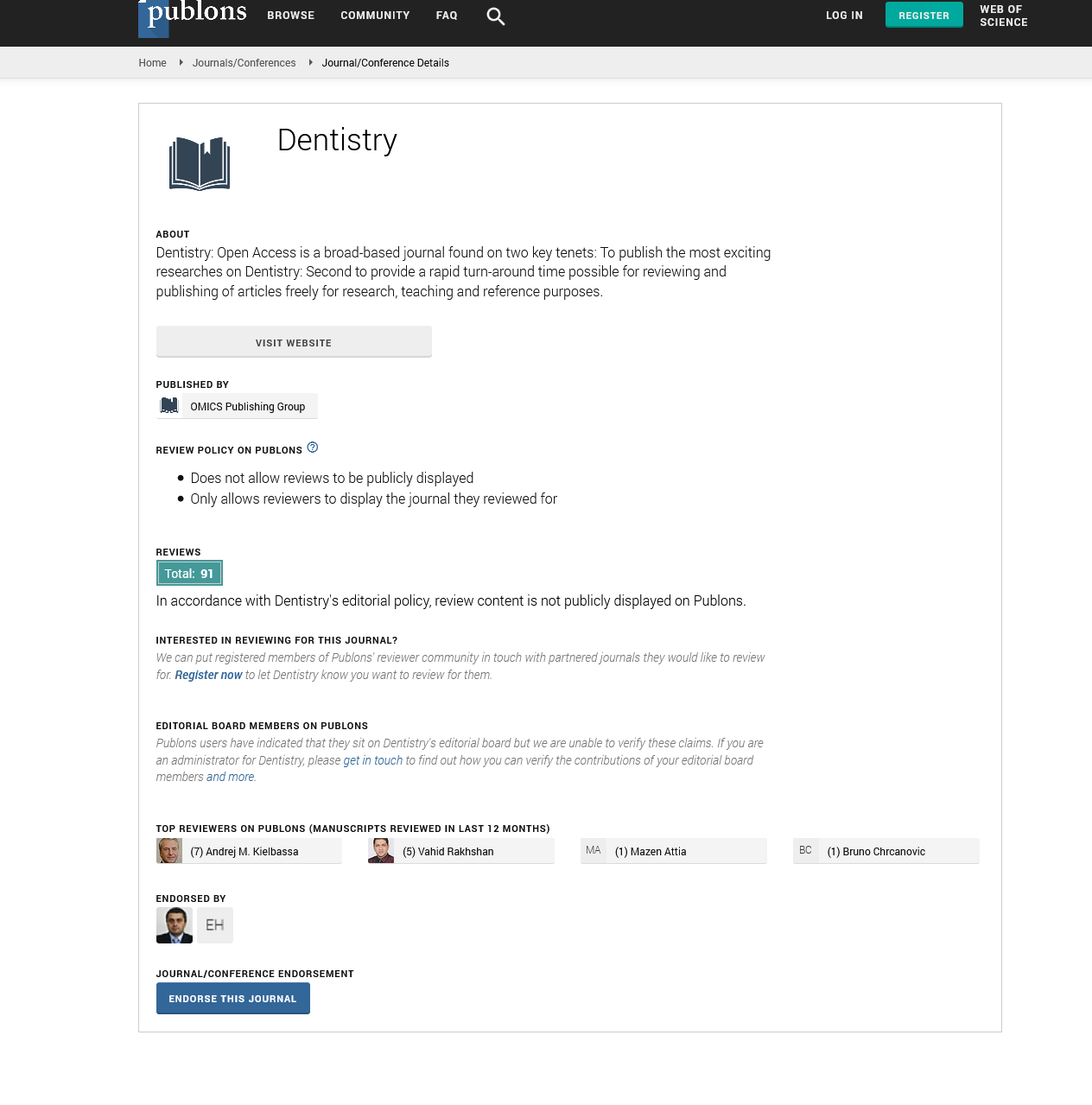Citations : 2345
Dentistry received 2345 citations as per Google Scholar report
Indexed In
- Genamics JournalSeek
- JournalTOCs
- CiteFactor
- Ulrich's Periodicals Directory
- RefSeek
- Hamdard University
- EBSCO A-Z
- Directory of Abstract Indexing for Journals
- OCLC- WorldCat
- Publons
- Geneva Foundation for Medical Education and Research
- Euro Pub
- Google Scholar
Useful Links
Share This Page
Journal Flyer

Open Access Journals
- Agri and Aquaculture
- Biochemistry
- Bioinformatics & Systems Biology
- Business & Management
- Chemistry
- Clinical Sciences
- Engineering
- Food & Nutrition
- General Science
- Genetics & Molecular Biology
- Immunology & Microbiology
- Medical Sciences
- Neuroscience & Psychology
- Nursing & Health Care
- Pharmaceutical Sciences
Short Communication - (2025) Volume 15, Issue 1
Advances in Electric Pulp Testing Using Dental Instrument
Masaki Ono*Received: 25-Feb-2025, Manuscript No. DCR-25-28557 ; Editor assigned: 27-Feb-2025, Pre QC No. DCR-25-28557 (PQ); Reviewed: 13-Mar-2025, QC No. DCR-25-28557 ; Revised: 20-Mar-2025, Manuscript No. DCR-25-28557 (R); Published: 27-Mar-2025, DOI: 10.35248/2329-9088.25.15.721
Description
Electric Pulp Testing (EPT) is a diagnostic procedure used in endodontics to determine the responsiveness of the pulp in a tooth. The test helps assess the viability of the pulp by applying a small electrical stimulus to provoke a response from nerve fibers within the tooth. Various factors influence the accuracy of EPT, including technique, patient conditions and instrument selection. One method to enhance conduction and improve reliability involves using dental instruments as bridging tools during the test.
Principles of electric pulp testing
The electric pulp tester generates a controlled electrical stimulus that is applied to the tooth's surface, usually on enamel or dentin, with a conductive medium such as toothpaste or electroconductive gel. The purpose is to excite the nerve fibers within the pulp, producing a sensory response. If a response is detected, it suggests that nerve function is intact, whereas a lack of response may indicate necrosis or an altered pulp state.
Types of dental instruments used for bridging
Endodontic files: Endodontic files are commonly used as conductors during EPT, especially for teeth with restricted access. A file is inserted into the root canal or placed in contact with the dentin, acting as a bridge between the EPT probe and the internal structure of the tooth. This method is particularly useful in Assessing pulp vitality in teeth with crowns, testing immature permanent teeth with open apices.
Explorers and probes: Dental explorers, particularly those made of stainless steel, can effectively transmit electrical signals when placed against the tooth surface. When using an explorer for bridging the explorer should be in direct contact with the dentin or a conductive restorative material.
Orthodontic brackets and wires: For patients with fixed orthodontic appliances, metal brackets and wires can be used as bridges to ensure electrical continuity. Since these components are already in contact with the enamel surface, they can serve as stable conductors. This approach is particularly beneficial for testing teeth that are difficult to isolate due to crowding, enhancing conductivity in cases where moisture control is challenging.
Clinical considerations and best practices
To maximize the effectiveness of bridging with dental instruments during EPT, clinicians should follow these best practices.
Proper contact and stability: The selected instrument should maintain firm contact with the tooth structure throughout the test and any movement during testing can lead to inconsistent readings or false results.
Patient communication: Patients should be informed about the test and instructed to indicate the first sensation they experience and anxiety or hypersensitivity can influence their response, leading to variations in perceived thresholds.
Conclusion
Bridging with dental instruments during electric pulp testing enhances diagnostic accuracy by improving electrical conductivity and facilitating effective stimulation. Instruments such as endodontic files, explorers, orthodontic brackets and metal restorations serve as reliable conductors in cases where direct probe placement is challenging. Adhering to best practices, including stable contact, use of conductive mediums and careful patient communication, ensures more consistent and meaningful results. While EPT remains an essential tool in endodontic diagnostics, its outcomes should be interpreted alongside complementary tests for a comprehensive evaluation of pulp vitality.
Citation: Ono M (2025). Advances in Electric Pulp Testing using Dental Instrument. J Dentistry. 15:721.
Copyright: © 2025 Ono M. This is an open-access article distributed under the terms of the Creative Commons Attribution License, which permits unrestricted use, distribution, and reproduction in any medium, provided the original author and source are credited.

